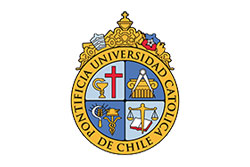
In the Fall of 2013, graduate students from the Massachusetts Institute of Technology (MIT) and the Pontificia Universidad Católica de Chile (PUC) collaborated on the design of Bus Rapid Transit (BRT) corridors. Working in cross-disciplinary teams of architects, designers, engineers, and planners, we sought to expand thinking about BRT, considering its potential not only as a mode of transportation, but also as a mechanism for driving innovations in urban design, development, and governance.
We have launched a website that summarizes the highlights of our proposals for Boston and Santiago. The projects were:
The Diamond Ring – Boston
The Diamond Ring represents a new approach to an old idea. Concepts for a circumferential transit line through the dense communities surrounding Boston date back at least to the Boston Transportation Planning Review of the 1960s. Such a line would supplement the predominantly radial rail transit network, generating significant travel time savings and freeing capacity in the downtown rail network. The proposed corridor will help alleviate the growing congestion in the transit network’s downtown core by improving connections between existing rail lines and two major employment centers, the Longwood Medical Area and Kendall Square, while also increasing transit access for surrounding residential communities.
The Massachusetts Bay Transportation Authority (MBTA) began an official study of the circumferential corridor in 1995. It dubbed the corridor the Urban Ring, identified major destinations to serve, and established an implementation timeline. Originally intended as Phase 1 of the Urban Ring, cross-town (CT) buses now travel circumferential routes that connect radial lines in Boston and the neighboring towns of Cambridge and Somerville, but these lines have generated little ridership. Subsequent phases of the Urban Ring project were put on hold in 2008, but recent planning efforts have revived the possibility of new BRT corridors in the city. (more…)
Gran Avenida – Santiago
Gran Avenida is a major north-south axis, 21 kilometers in length, that crosses five communes of the Greater Santiago metropolitan area. The corridor begins at Alameda Libertador Bernardo O’Higgins (the city’s historical center) as a one-way pair of streets, Nataniel Cox and San Diego, which merge at the Zanjón de la Aguada creek to form Gran Avenida. Gran Avenida continues south to the La Cisterna commune, where Los Morros Avenue splits off to the east. The western continuation of Gran Avenida enters the center of the San Bernardo commune, where it runs parallel to a north-south intercity rail line before changing names to Avenida Portales and finally merging with the Panamerican Highway, which continues to the south of Chile.
As an axis of the city’s growth, Gran Avenida exemplifies Santiago’s traditional pattern of urban segregation, with middle and high income residents near the historic center and groups of lower income residents concentrated in dense peripheral areas. Addressing this segregation, and the associated lack of services and opportunities in the outlying areas, is a key planning and transportation challenge. At the same time, through its role as a metropolitan connector, important amenities and government facilities are located along the avenue, including forty-three educational institutions, three regional shopping centers, two major hospitals, and a military base. (more…)












